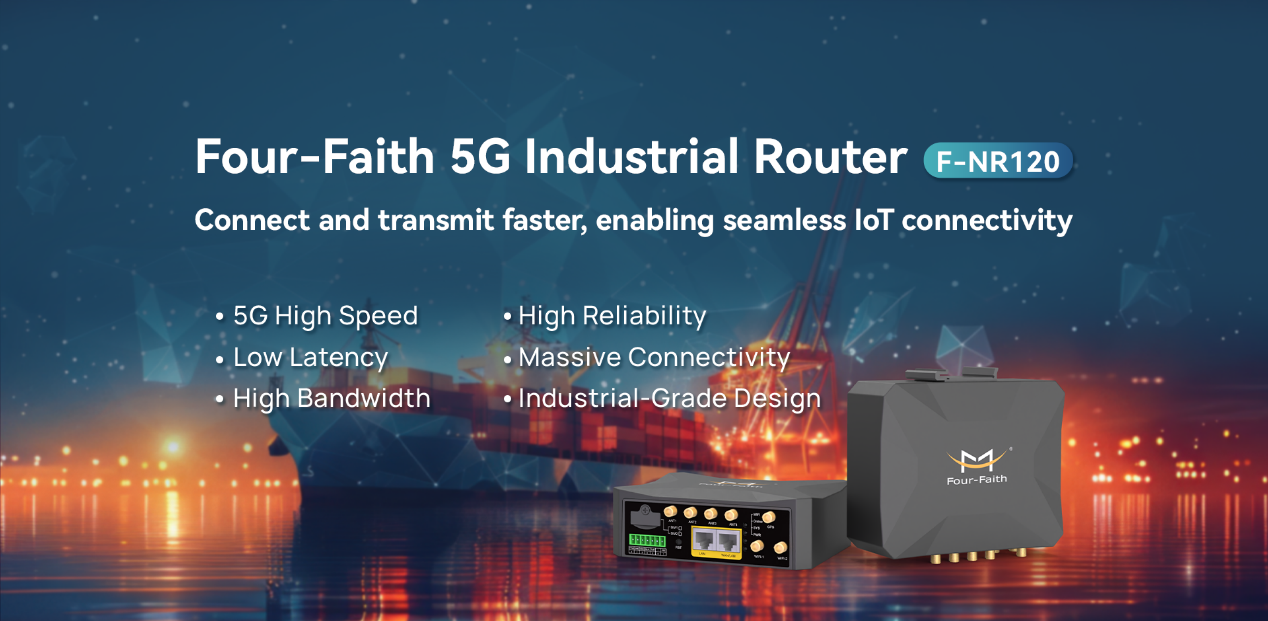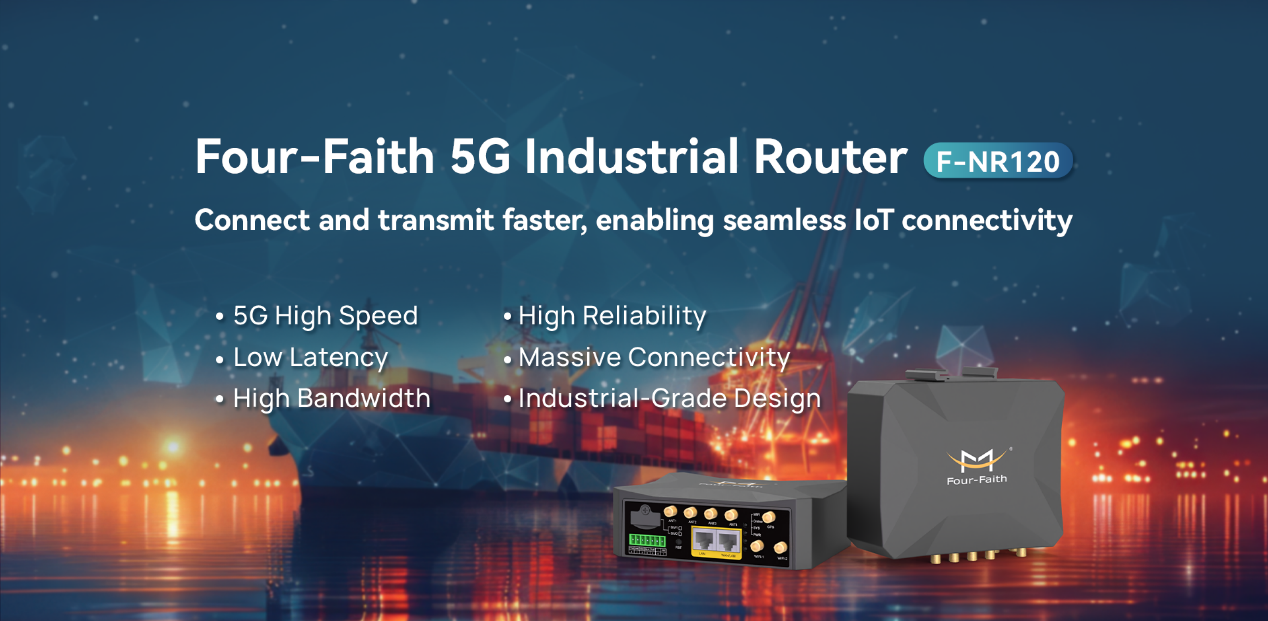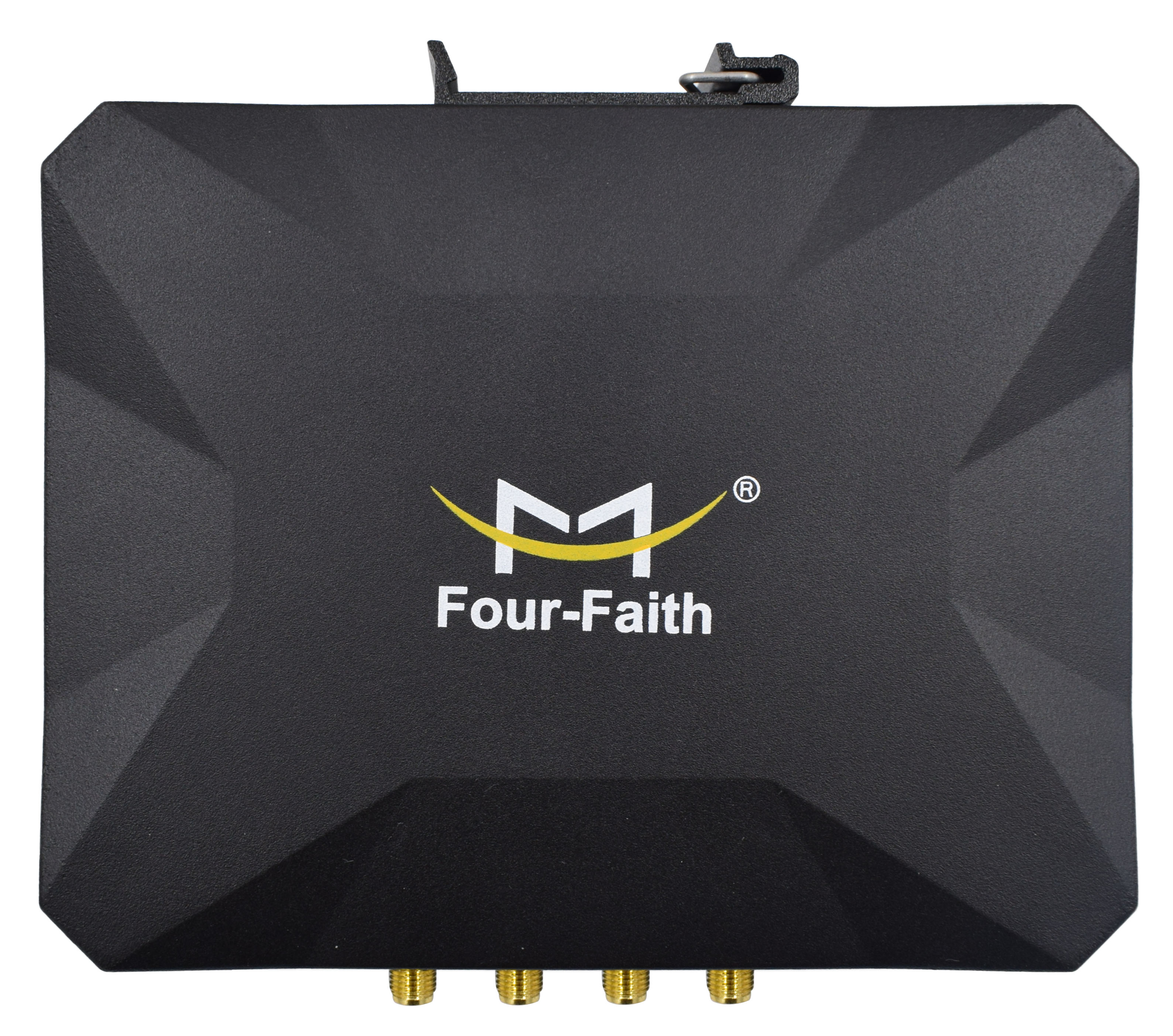RECOMMEND SOLUTIONS
RELATED PRODUCTS
Four-Faith 5G Industrial Router Empowers Vessel Monitoring, Achieving Comprehensive Maritime Network Coverage
Date:2024-08-31 10:31:40
In the context of economic globalization, the growth of international trade has driven demand in the ship market. Additionally, the development of fields such as marine engineering and marine resource exploitation has provided new market opportunities for the shipbuilding industry.
As a critical component of the international logistics system, the network security and operational efficiency of maritime transport have garnered widespread attention. Shipping companies are increasingly focused on how to leverage emerging technologies in information and digitization to effectively enhance the security capabilities and real-time monitoring of their vessel networks, meeting the pressing demands of market development.
Demand Analysis
- Slow Information Updates, Difficult Real-Time Monitoring
Traditional vessel monitoring often relies on manual inspections and periodic reports, leading to slow information updates that fail to reflect real-time changes in vessel status and location. - High Labor Costs, Low Inspection Efficiency
Manual inspections of vessels require significant manpower, increasing costs and leaving room for human error. Additionally, the coverage of manual inspections is limited, making it challenging to comprehensively monitor all vessels and time periods. - Slow Emergency Response, Difficult Hazard Detection
In emergencies, traditional monitoring methods require multiple layers of reporting and coordination, resulting in slow response times and delayed effective action. The lack of intelligent data analysis also hampers the quick identification of unexpected risks. - Easily Falsified Data, High Security Risks
Traditional monitoring methods depend on paper documents or simple electronic records, which are susceptible to tampering or forgery, compromising data authenticity and reliability. These methods are also inadequate for secure data storage and transmission, posing risks of data loss and leakage.
Solution Overview
To improve the operational quality of maritime communication network systems, Four-Faith has integrated emerging technologies such as IoT, big data, and cloud computing, along with current maritime network demands and practical 5G technology applications. The Four-Faith 5G Smart Vessel Monitoring Solution offers comprehensive network coverage for vessels, ensuring efficient and complete data transmission channels between core networks, enhancing vessel safety, improving operational efficiency, and promoting the intelligent development of ships.

The solution mainly consists of three components: a 5G industrial router, a network video recorder (NVR), and cameras. The high-speed network connection provided by the 5G industrial router transmits the real-time video data captured by the cameras to the NVR for recording and storage, while also supporting remote access and monitoring. The cameras, as the front-end devices of the monitoring system, are responsible for capturing video images; the NVR is the core device of the monitoring system, responsible for receiving, recording, and storing the video data transmitted by the cameras. The 5G industrial router is the network device connecting the cameras and the NVR, providing a high-speed and stable network connection. The Four-Faith 5G Industrial Router F-NR120 adopts the latest 5G communication technology, featuring high bandwidth, low latency, and wide coverage, which can meet the demands of high-definition video transmission.
Solution Advantages
High-Precision Positioning, Real-Time Vessel Monitoring
The solution utilizes the high bandwidth and low latency characteristics of 5G networks, combined with advanced technologies such as sensing and communication integration base stations, to achieve high-precision real-time monitoring of vessel position, speed, and trajectory. This enables the system to sense vessel dynamics and ensure navigation safety. Additionally, through the 5G network, vessel monitoring data can be transmitted in real-time to the monitoring center, providing decision-makers with immediate and accurate vessel status information, allowing for timely response measures.
Intelligent Monitoring, Timely Avoidance of Maritime Risks
By leveraging 5G networks and intelligent algorithms, the solution can intelligently sense and assess the vessel's condition, promptly detecting anomalies such as erratic movements or equipment malfunctions. It automatically triggers warning mechanisms to avoid risks and minimize losses.
Multiple Networking Options, Ensuring Uninterrupted Maritime Communication
The solution supports various networking methods, such as Mesh networks and dual-link backup, which can be flexibly configured according to actual needs and environmental conditions to ensure network communication stability and reliability. It can also be combined with satellite communication technology to maintain communication even in areas without network signals.
Cost Reduction, Increased Vessel Monitoring Efficiency
The 5G vessel monitoring solution can significantly reduce the costs associated with vessel communication and monitoring. Remote, non-contact inspections can reduce labor, material, and time costs, while intelligent monitoring and early warning mechanisms enhance vessel monitoring efficiency.
Smart Monitoring Platform, Building a Maritime Safety Line
The solution can integrate with the Four-Faith cloud platform to remotely control and collect device data, report network quality, equipment status, and coordinates to the backend in real time, facilitating backend maintenance work and achieving intelligent monitoring.
Product Recommendation
The Four-Faith 5G Industrial Router F-NR120 is equipped with an industrial-grade 5G high-speed wireless communication module, supporting both SA and NSA modes and compatible with major carriers to achieve high-speed transmission and low latency. The product offers a rich interface configuration, including 2 Gigabit Ethernet ports, 1 RS232, 1 RS485, 1 PPS timing output interface (optional), and 1 CAN port (optional), allowing for easy connection to various devices for high-speed data transmission. It also supports Beidou positioning (optional).

Key Features
Supports 5G/5G LAN/5G RedCap
Supports WiFi 2.4G and 5.8G
Intelligent switching between 5G/4G and wired connections, supports IPV6/IPV4, dual SIM cards, positioning, PPS output, and CAN functionality
Supports 2 Gigabit Ethernet ports, 1 RS232 or RS485 interface, 1 CAN interface, and B-code pin output
Supports high-precision timing, 5G module probes, gateway probes, various VPNs, VxLAN, GRETAP, FRP, and back routing
Stable operation in industrial environments, ensuring no data loss; supports local storage and data encryption to ensure data integrity
The product can connect to the Four-Faith cloud platform, enabling remote management of devices, facilitating centralized management, remote configuration, and upgrades, thereby improving operational efficiency
Platform Recommendation
The Four-Faith Cloud Platform is an IoT cloud service ecosystem that integrates cloud management, cloud channels, and cloud openness. It provides a "one-stop" networking service for enterprise customers, helping users quickly build IoT networks and monitor the operational status of on-site devices in real time. Cloud services enable remote maintenance, remote diagnostics, and monitoring while providing reliable and secure data aggregation services for IoT big data collection, transmission, and analysis.
Cloud Management
Full Series: Four-Faith Cloud supports access to the entire range of Four-Faith devices
High Concurrency: Supports massive connections, with a single node capable of connecting 1 million devices
Multi-Protocol: Supports various IoT access protocols, including MQTT, TCP, HTTP, and more
Cloud Channels
Integrates networking technologies like NAT traversal, providing highly reliable, secure, and flexible network connections, allowing users to access devices and transmit data anytime, anywhere
Cloud Openness
The platform can publish data obtained and processed by the IoT platform through APIs to various enterprise applications. API subscribers can request and retrieve the necessary data via API, achieving comprehensive data openness.
TAGS: 5G Industrial Router [Previous Page]
Previous Page:Four-Faith 5G+ Autonomous Mining Truck Transportation Solution: Strengthening the Safety Foundation for Mining Operations
next page:last_page







